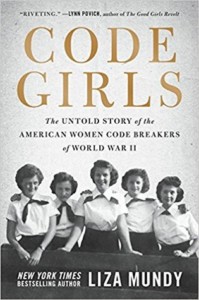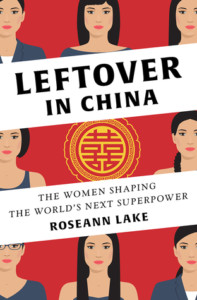March is Women’s History Month, so it’s a great time to learn something new about women’s history. Check out one of these recent books we’ve gotten at the library.

Code Girls: The Untold Story of the American Women Code Breakers of World War II by Liza Mundy (2017; 416 pages). Some 11,000 women worked for the government during WWII as codebreakers; at least 80% of the Navy’s codebreaking workforce were women. They broke enemy codes, tested American codes, and did other high-level work, but since it was all classified, they told their families that they were doing low-level office work. Pick this up if you liked the book Hidden Figures by Margot Lee Shetterly.

Daring to Drive: A Saudi Woman’s Awakening by Manal Al-Sharif (2017; 289 pages). A computer science engineer in Saudi Arabia, Manal Al-Sharif longer for independence, but the strict social laws of her country meant a man had to rent her apartment for her and she couldn’t travel without a male chaperon (sometimes her teenaged brother). And she couldn’t drive the car she owned and knew how to drive. Until one day she did and she was immediately arrested. This is a compelling memoir about religion, culture, and standing up for yourself when no one else will. If you liked I Am Malala by Malala YouSafzai, you might like this one, too.

Leftover in China: The Women Shaping the World’s Next Superpower by Roseann Lake (2018; 271 pages). Forty years ago, China enacted the one-child policy, only recently relaxed. Among many other unintended consequences, it resulted in both an enormous gender imbalance—with a predicted twenty million more men than women of marriage age by 2020—and China’s first generations of only-daughters. Given the resources normally reserved for boys, these girls were pushed to study, excel in college, and succeed in careers, as if they were sons. How are these women shaping the future of China? And what does that mean for them and for the world?

The Radium Girls: The Dark Story of America’s Shining Women by Kate Moore (2017; 429 pages). When radium was discovered, the world was obsessed. Radium appeared everywhere and was touted as a substance to promote health. The girls who painted radium onto watch dials were told that radium was good for them, so they did not hesitate to point the tips of their brushes with their mouths, enabling them to paint very fine lines on the watches. But as gruesome side effects begin to take hold, these women were involved in a scandal that rocked the world and a groundbreaking lawsuit against the companies that were slowly killing them. This is a grim and compelling true story of a dark chapter in women’s history.
— Abby Johnson, Collection Development Leader
